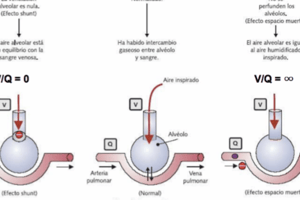Podcast
Questions and Answers
What is the function of luteinizing hormone (LH) in the female reproductive system?
What is the function of luteinizing hormone (LH) in the female reproductive system?
LH causes ovulation, which is the release of an egg from the ovary. It also results in the formation of a corpus luteum.
Which of the following hormones is responsible for stimulating the production of estrogen in the female reproductive system?
Which of the following hormones is responsible for stimulating the production of estrogen in the female reproductive system?
- LH (correct)
- GnRH
- Estrogen
- FSH (correct)
The corpus luteum continues to function even if fertilization does not occur.
The corpus luteum continues to function even if fertilization does not occur.
False (B)
What is the primary function of the hormone progesterone in the female reproductive system?
What is the primary function of the hormone progesterone in the female reproductive system?
What is the function of GnRH in the male reproductive system?
What is the function of GnRH in the male reproductive system?
What is the difference between the ovarian cycle and the menstrual cycle?
What is the difference between the ovarian cycle and the menstrual cycle?
Why is it not advisable for women nearing menopause to get pregnant?
Why is it not advisable for women nearing menopause to get pregnant?
Why is an ectopic pregnancy, where a fertilized egg implants in the fallopian tube, dangerous for the mother?
Why is an ectopic pregnancy, where a fertilized egg implants in the fallopian tube, dangerous for the mother?
Flashcards
Male Reproductive System Hormone Regulation
Male Reproductive System Hormone Regulation
The hypothalamus releases GnRH, which stimulates the pituitary gland to release FSH and LH. FSH and LH then stimulate the testes to produce testosterone and sperm.
Testosterone
Testosterone
Testosterone is the primary male sex hormone, responsible for development of male secondary sex characteristics and sperm production.
FSH in Males
FSH in Males
Follicle-stimulating hormone (FSH) stimulates sperm production in the testes.
LH in Males
LH in Males
Signup and view all the flashcards
Negative Feedback in Male Hormone Regulation
Negative Feedback in Male Hormone Regulation
Signup and view all the flashcards
Menstrual Cycle
Menstrual Cycle
Signup and view all the flashcards
Ovarian Cycle vs Uterine Cycle
Ovarian Cycle vs Uterine Cycle
Signup and view all the flashcards
Follicular Phase
Follicular Phase
Signup and view all the flashcards
Estrogen and Uterine Lining
Estrogen and Uterine Lining
Signup and view all the flashcards
LH Surge and Ovulation
LH Surge and Ovulation
Signup and view all the flashcards
Corpus Luteum
Corpus Luteum
Signup and view all the flashcards
Progesterone and Uterine Lining
Progesterone and Uterine Lining
Signup and view all the flashcards
Fertilization and Corpus Luteum
Fertilization and Corpus Luteum
Signup and view all the flashcards
No Fertilization and Corpus Luteum
No Fertilization and Corpus Luteum
Signup and view all the flashcards
Menstruation
Menstruation
Signup and view all the flashcards
Menstrual Cycle Feedback Loop
Menstrual Cycle Feedback Loop
Signup and view all the flashcards
GnRH and Estrogen Levels
GnRH and Estrogen Levels
Signup and view all the flashcards
Menstrual Cycle - Normal Process
Menstrual Cycle - Normal Process
Signup and view all the flashcards
Menstrual Cycle Variations
Menstrual Cycle Variations
Signup and view all the flashcards
Factors Affecting Menstrual Cycle
Factors Affecting Menstrual Cycle
Signup and view all the flashcards
Dysmenorrhea
Dysmenorrhea
Signup and view all the flashcards
Ectopic Pregnancy
Ectopic Pregnancy
Signup and view all the flashcards
Ectopic Pregnancy Risks
Ectopic Pregnancy Risks
Signup and view all the flashcards
Menopause
Menopause
Signup and view all the flashcards
Menopause and Pregnancy
Menopause and Pregnancy
Signup and view all the flashcards
Female Reproductive System
Female Reproductive System
Signup and view all the flashcards
Importance of Menstrual Cycle Knowledge
Importance of Menstrual Cycle Knowledge
Signup and view all the flashcards
Reproductive Health Check-ups
Reproductive Health Check-ups
Signup and view all the flashcards
Study Notes
Coordinated Functions of Reproductive, Endocrine, and Nervous Systems
- The reproductive, endocrine, and nervous systems work together to regulate male reproductive functions.
- GnRH (gonadotropin-releasing hormone) is secreted by the hypothalamus.
- GnRH stimulates the pituitary gland to release FSH (follicle-stimulating hormone) and LH (luteinizing hormone).
- LH stimulates testicular cells to secrete testosterone.
- FSH, along with testosterone, stimulates sperm production in the seminiferous tubules.
- High testosterone levels inhibit GnRH secretion.
Hormones in Male Reproductive System
- Gonadotropin-releasing hormone (GnRH) is released by the hypothalamus.
- The hypothalamus signals the pituitary gland to release FSH and LH.
- FSH and LH affect the testes.
- LH stimulates testosterone production.
- FSH and testosterone stimulate sperm production in the seminiferous tubules.
- High testosterone levels inhibit GnRH release.
Hormones in Female Reproductive System
- The hypothalamus releases GnRH, which signals the pituitary gland to release FSH and LH.
- FSH stimulates follicular growth in the ovaries, which causes estrogen secretion.
- LH causes ovulation and the formation of a corpus luteum, resulting in progesterone production.
- Estrogen thickens the uterine lining (endometrium) and inhibits FSH and LH release for most of the cycle.
- Progesterone also thickens the uterine lining and inhibits FSH and LH.
Menstrual Cycle
- The cycle typically lasts 28 days, but lengths vary.
- The menstrual cycle involves phases like menstruation, the proliferative phase (uterine lining thickens), ovulation, and the secretory phase (further uterine lining thickening).
- Ovulation usually occurs around day 14.
- The cycle includes the ovarian cycle and uterine cycle.
Ovarian Cycle
- The ovarian cycle involves the growth and release of an egg (ovum).
- The cycle involves the phases of follicular phase, ovulation, and luteal phase, where the corpus luteum develops.
- Hormonal changes, like estrogen and progesterone, drive the ovarian cycle.
Feedback Mechanisms
- Feedback mechanisms regulate processes in the reproductive system.
- High estrogen levels in the bloodstream can inhibit GnRH production.
Studying That Suits You
Use AI to generate personalized quizzes and flashcards to suit your learning preferences.




